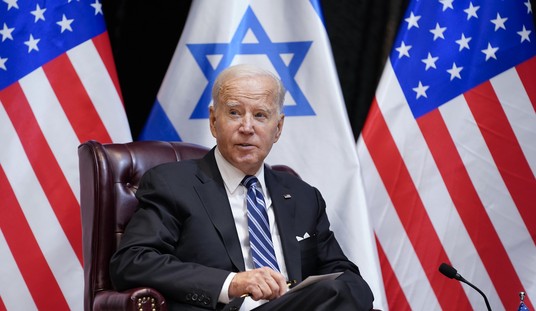TACUN UMAN, Guatemala – Chanting “Hon-dur-as! Hon-dur-as! Hon-dur-as!” hundreds of migrants from the first U.S.-bound caravan of 2020 last week showed up at the Puente Rodolfo Robles International bridge in this violent smuggler’s town on Guatemala’s northwestern border with Mexico, always a symbolic turnstile to the American goal line. Mexican officials on the other side had let the hundreds of caravan migrants stacking up here by the hour know they would be allowed to cross in the morning.
But visible excitement went negative, then dissipated into disbelief, as I explained to a dozen young male migrants surrounding me of the layered defense Mexico had arranged against them across that bridge. Somehow, unbelievably, they did not know they would be ushered into a lingering kind of imprisonment in the city of Tapachula along with untold thousands of their marooned predecessors who have been referring to it lately as a “concentration camp.”
“I didn’t know about any checkpoints and roadblocks,” Hugo Mosquera of San Pedro Sula confessed after I explained the new situation to him. “I don’t know what I’ll do, but I won’t return to my country.”
It was predictable, after 10 days of reporting for the Center for Immigration Studies on what the Mexicans had created, that very shortly later, I would see Mosquera and hundreds of his fellow Honduran caravanners involuntary returned to their homeland -- by forced deportation -- when they staged a series of failed charges over the bridge and under it.
A Clear-cut Trump Policy Victory
None of the estimated 2,000 in this caravan could have gotten anywhere near the American border because President Donald Trump last Spring threated ruinous trade tariffs on Mexico if the government failed to crack down on the mass illegal immigration that overran the American border during 2018-2019. The Mexican government deployed thousands of National Guard troops and immigration officers to roadblocks throughout the nation’s road system, stopped granting humanitarian transit visas, and began requiring those who stayed to apply for Mexican asylum, a process that takes up to six months and renders recipients ineligible for U.S. asylum.
Recommended
The troops have been blocking and returning migrants by the thousands to Tapachula and elsewhere in southern Mexico to decide whether they will be deported or apply for Mexican asylum while forced to stay in place for the many months that takes.
Jorge Maradiaga of Ocotepeque, Honduras was among many others who, when I told him what was over there, acknowledged: “Now, I’m afraid to go into Mexico.”
The Trump-inspired Mexican defense constitutes the very essence of high-consequence immigration deterrence policy. It not only guards the U.S. southern border from those who have already gotten to within striking distance of it but also clearly discourages at least some migrants back home from even trying their luck.
The time has come to openly declare that Trump’s threat-laced demands here are largely responsible for a precipitous, nearly 80 percent free-fall in apprehensions of Central American migrants at the U.S. border since May’s 140,000 to a (still-high) 40,000 in December. The mass illegal migration crisis of 2018-2019 is over.
The U.S. Presidential Election Outcome Now Part of Migrant Decisions
But the victory declaration comes with a caveat. Absent permanent legislative prescriptions by the U.S. Congress, the longevity of the Trump success is tenuous because it depends so entirely on Mexico’s willingness to play ball, that Mexico stands fast against future caravans, and that Trump is reelected.
Indeed, among migrants who chose Mexico entrapment to returning home, a calculated gambit was clearly in many migrant minds: Numerous migrants, unsolicited, told me their game plan was to live in Mexico until Trump loses the November 2020 election less than a year away. Then, they say, they’ll be well-positioned to cross when Democrats reverse Trump’s policies and clear the path.
“A lot of people in El Salvador believe he (Trump) is the reason all this is happening, that he is selfish and cruel and doing everything he can to make us suffer,” said El Salvadoran Brenda Ramos in Guatemala as she was preparing to enter Mexico knowing she’ll be struck there for a long time. “But once Trump is defeated and the Democrats take over, things are going to get better.”
Five Central American women who applied for Mexican asylum all raised their hands when asked to indicate whether they had chosen to live in Mexico, rather than return home, on the assumption that Trump would lose and the path to the American border would once again clear.
“I want Trump out!” said Honduran Katherine Cabrera of Honduras as she waited to get some papers stamped at the Tapachula detention center with her newborn son. “I’ll wait for that because it would make things easier to get in.”
Others are less sanguine; thousands are leaving or being deported and not returning, although the numbers are hard to know.
Alma Delia Cruz, head of Mexico’s asylum agency COMAR (Commission for Refugees) in Tapachula, cited a steep spike in asylum claims toward the latter half of 2019, from a thousand or so in 2017 to more than 44,000 filed here in 2019 due to the new Mexican policy. Of those, Cruz estimated, about 40 percent are classified as rejected, mainly on grounds of abandonment.
Abandonment indicates that many of those chose to go home.
Smuggling Now An Expensive High-Risk Endeavor
Some others may be hiring smugglers instead to get them to the United States. A recent Associated Press investigation found that Trump’s policies had “reduced the number of migrants attempting the journey” but also raised the price necessary for a determined enough wealthy few to pay smugglers to get around the National Guard roadblocks.
Even if they can reach the American border these days, though, there’s a good chance they’ll be pushed back into Mexico under Trump’s “Wait in Mexico” policy and lose the high smuggling fees they paid. This is a significant deterrence too.
A Haitian who would only give his name as “Wladimir” said there was no way he was going to stay in Tapachula even if he had to risk good money on a smuggler to get him and his wife through the Mexican road blocks to the U.S. border and then evade Border Patrol if possible. Even if Border Patrol catches them, he reasoned, “sometimes the Americans still let some people in. You never know who they’re going to let in. Maybe us.”
About 60 percent of asylum requests are approved after months of waiting, after which migrants are free to travel anywhere to work in Mexico. But even these migrants don’t plan to stay for a “Mexico Dream.”
“Many people believe in some small way they are still going to cross,” said another COMAR official in Tapachula whose office registers newly arrived migrants.
“They still have the American dream,” said Claudia Breseno, who runs COMAR’s new-migrant registration office. “Right now, Mexico is full of check points. Most see this like, if I can get this paper, I won’t have too much trouble crossing later.”
Probing, Testing for a Collapse in Mexico’s Defense
Faced by steep smuggling fees that don’t guarantee a successful U.S. border crossing, the pressure to return home grows more intense by the day. Jobs are scarce around Tapachula and so is money, either to live on or to return home, especially for migrants from other continents like the 60 Yemenis Bresenio said registered for asylum last year. Dilapidated hotels are filled to capacity with the waiting masses. Others sleep in the streets.
In the meantime, whomever is organizing new caravans – perhaps smugglers or humanitarian aid groups seeing revenues fall hard -- must certainly be doing so as a means to test, probe and maybe force Mexico to relent.
Whether the flood waters are held back all depends on whether Mexico stays the course, especially if its troops are ever returned to the barracks. Thousands in Mexico and millions around the world are looking for any pause, any letup, any crack in the defense.

























Join the conversation as a VIP Member